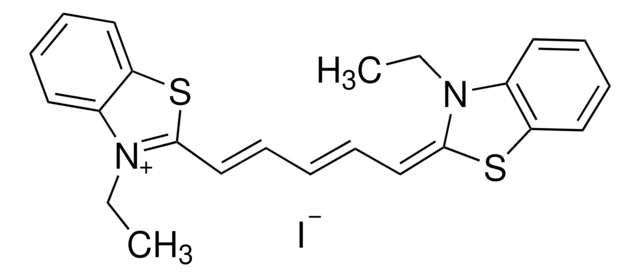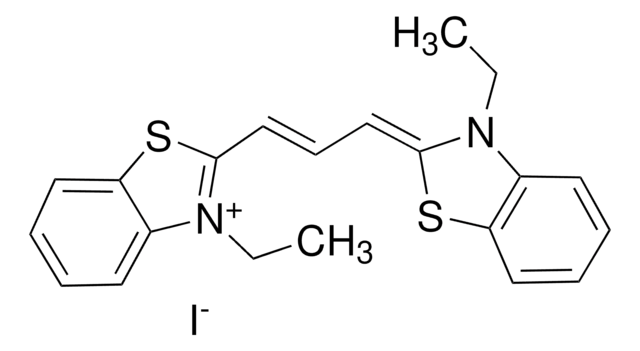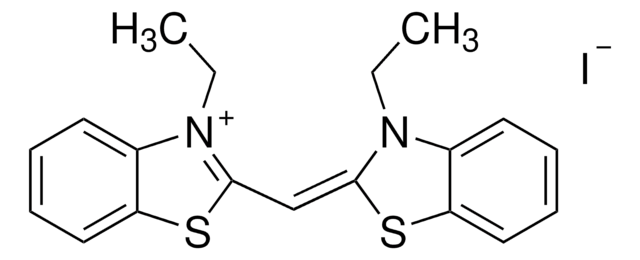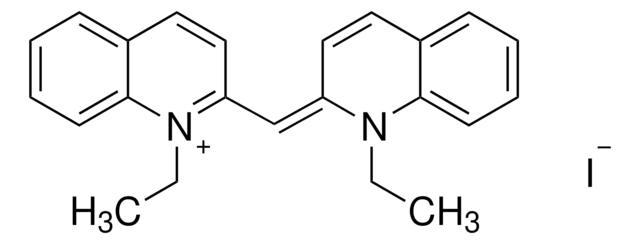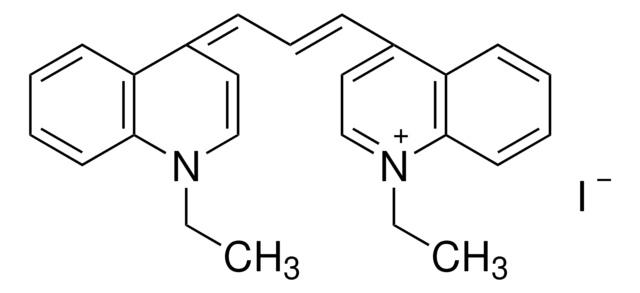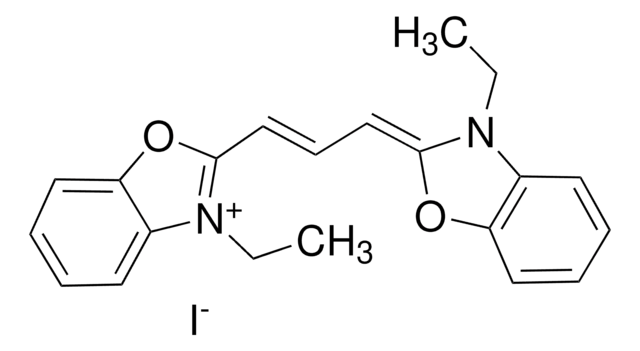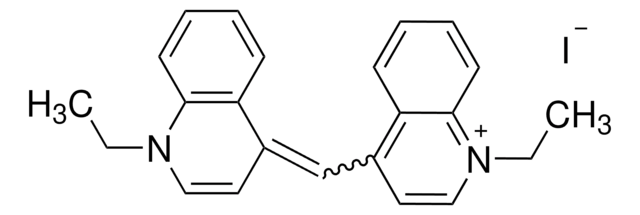Kluczowe dokumenty
381306
3,3′-Diethylthiatricarbocyanine iodide
99%
Synonim(y):
3-Ethyl-2-[7-(3-ethyl-2-benzothiazolinylidene)-1,3,5-heptatrienyl]benzothiazolium iodide, DTTC iodide, DTTCI, DiSC2(7)
About This Item
Polecane produkty
Poziom jakości
Próba
99%
mp
211 °C (dec.) (lit.)
λmaks.
765 nm
ciąg SMILES
[I-].CCN1\C(Sc2ccccc12)=C\C=C\C=C\C=C\c3sc4ccccc4[n+]3CC
InChI
1S/C25H25N2S2.HI/c1-3-26-20-14-10-12-16-22(20)28-24(26)18-8-6-5-7-9-19-25-27(4-2)21-15-11-13-17-23(21)29-25;/h5-19H,3-4H2,1-2H3;1H/q+1;/p-1
Klucz InChI
OYVFJKVYVDYPFV-UHFFFAOYSA-M
Szukasz podobnych produktów? Odwiedź Przewodnik dotyczący porównywania produktów
Powiązane kategorie
Zastosowanie
Hasło ostrzegawcze
Warning
Zwroty wskazujące rodzaj zagrożenia
Zwroty wskazujące środki ostrożności
Klasyfikacja zagrożeń
Acute Tox. 4 Dermal - Acute Tox. 4 Inhalation - Acute Tox. 4 Oral - Eye Irrit. 2 - Skin Irrit. 2 - STOT SE 3
Organy docelowe
Respiratory system
Kod klasy składowania
11 - Combustible Solids
Klasa zagrożenia wodnego (WGK)
WGK 3
Temperatura zapłonu (°F)
Not applicable
Temperatura zapłonu (°C)
Not applicable
Środki ochrony indywidualnej
dust mask type N95 (US), Eyeshields, Gloves
Wybierz jedną z najnowszych wersji:
Masz już ten produkt?
Dokumenty związane z niedawno zakupionymi produktami zostały zamieszczone w Bibliotece dokumentów.
Klienci oglądali również te produkty
Produkty
Graphene has emerged as the new wonder material. Being only one atom thick and composed of carbon atoms arranged in a hexagonal honeycomb lattice structure, the interest in this material has exploded exponentially since 2004 when it was first isolated and identified using a very simple method.
Nasz zespół naukowców ma doświadczenie we wszystkich obszarach badań, w tym w naukach przyrodniczych, materiałoznawstwie, syntezie chemicznej, chromatografii, analityce i wielu innych dziedzinach.
Skontaktuj się z zespołem ds. pomocy technicznej